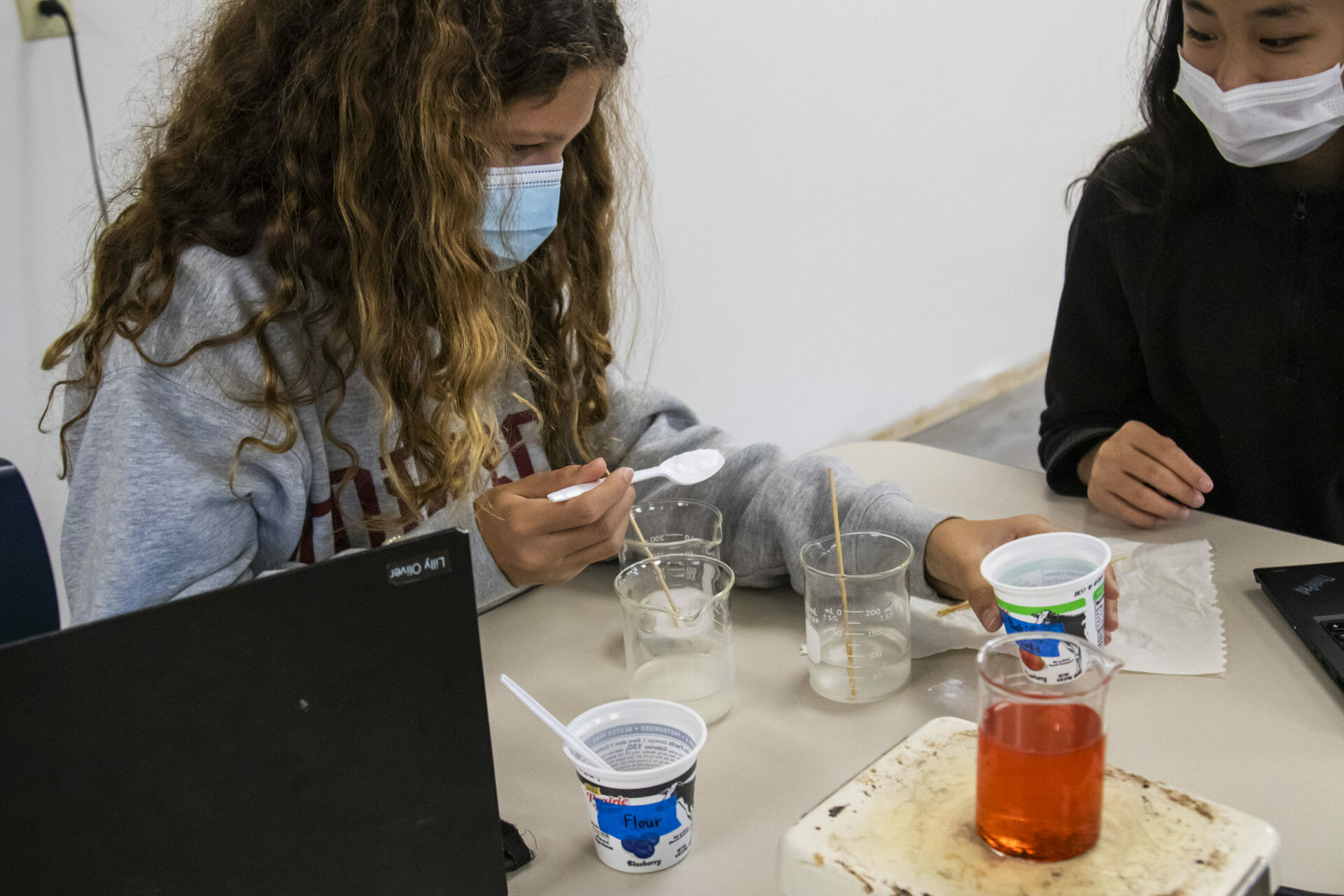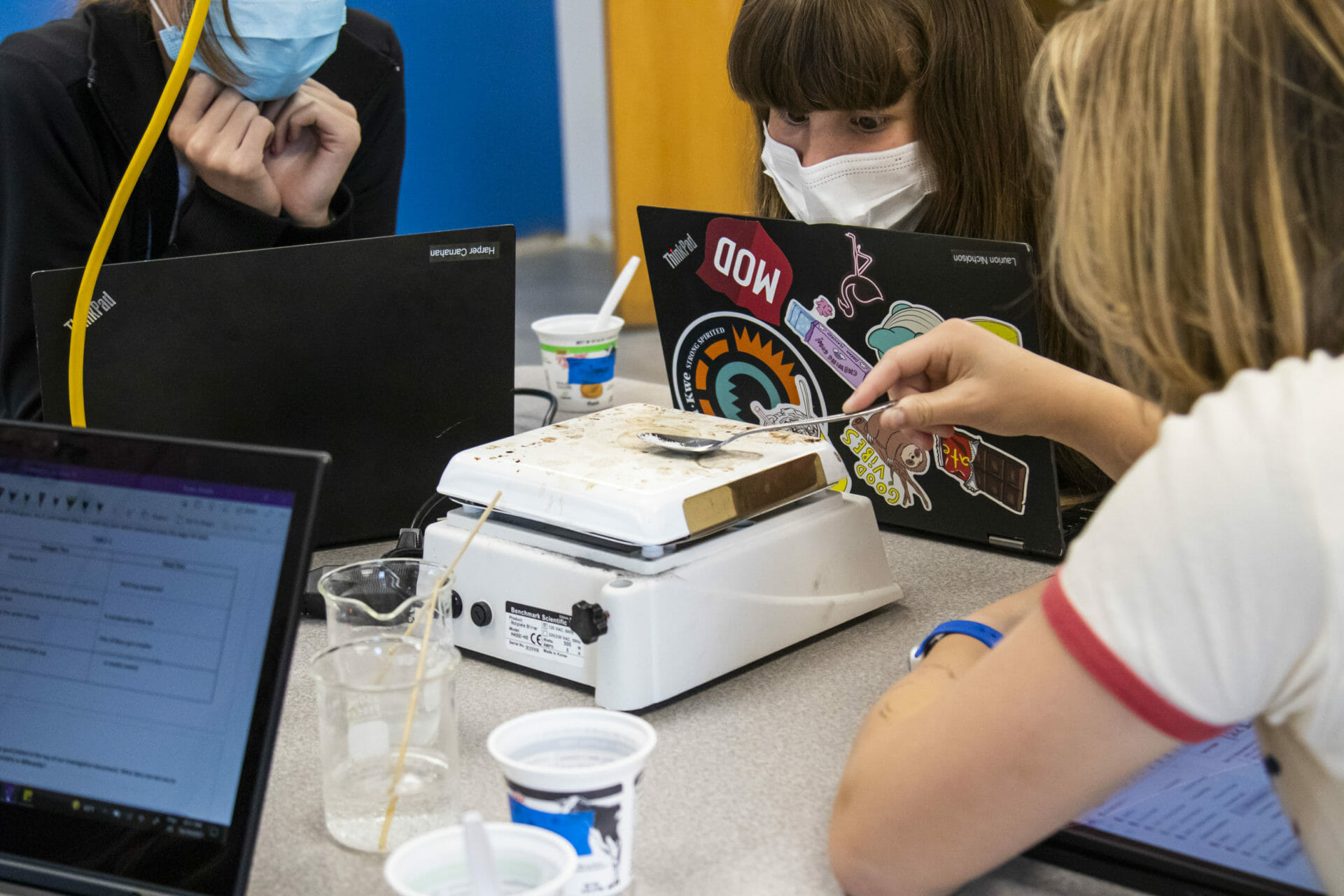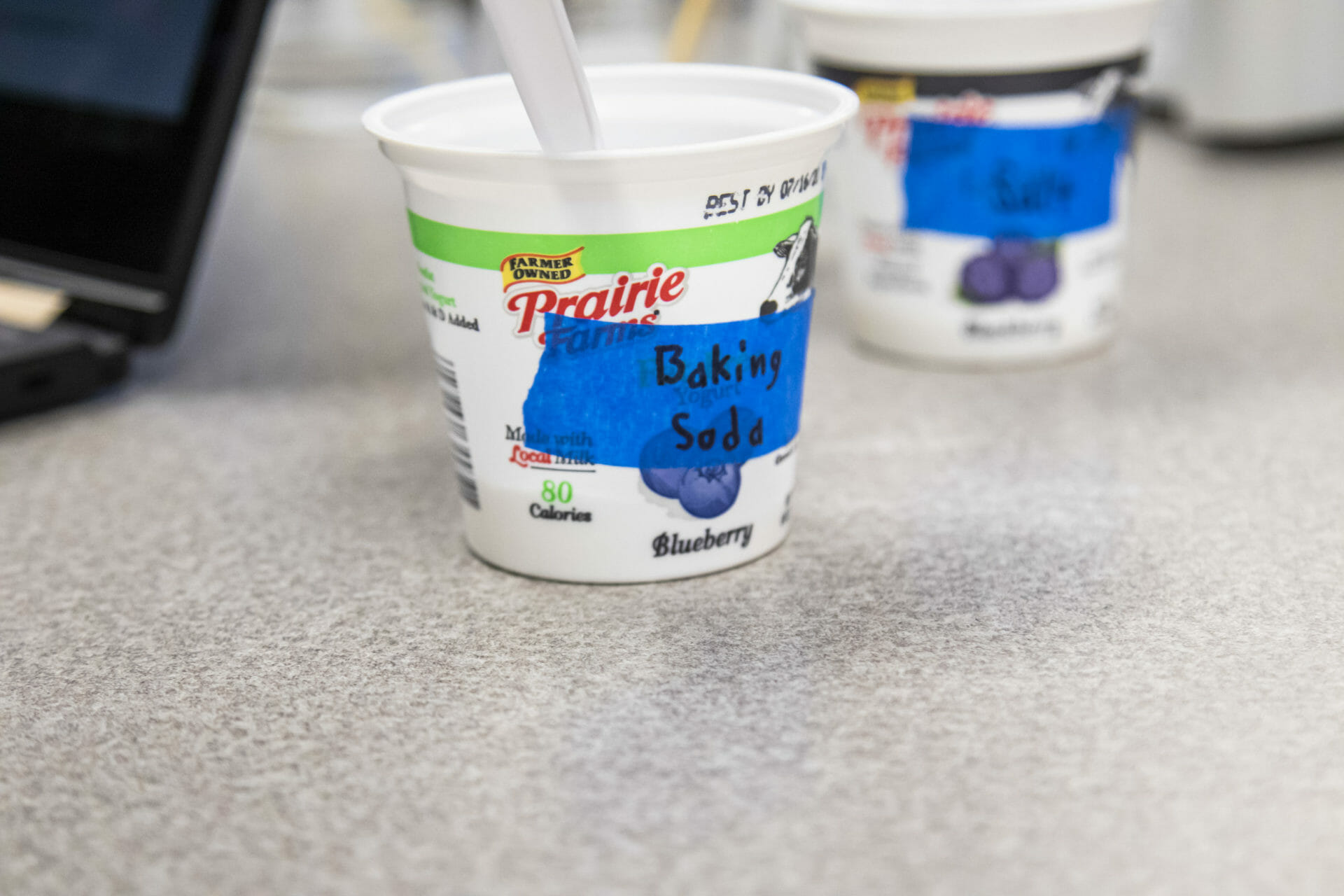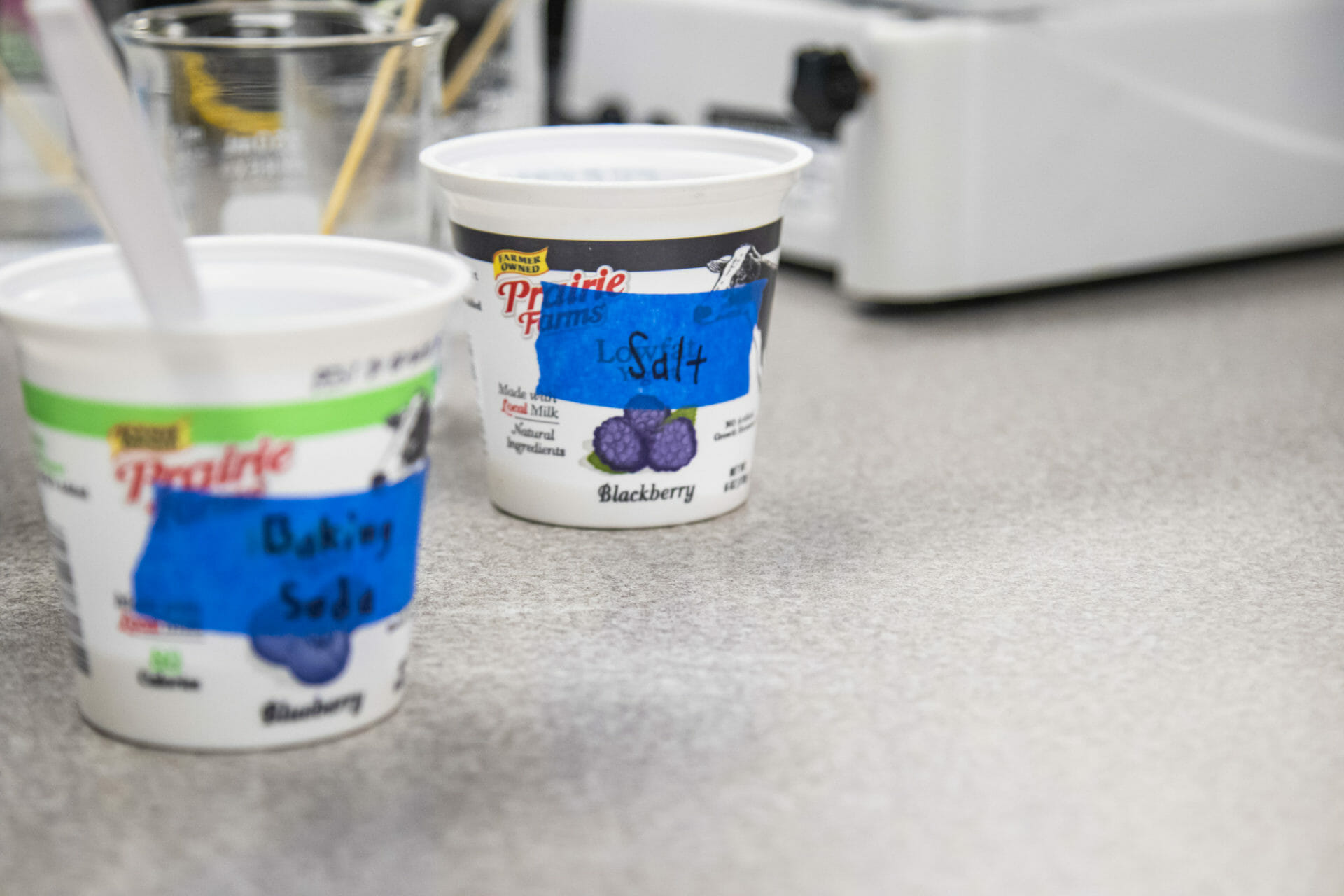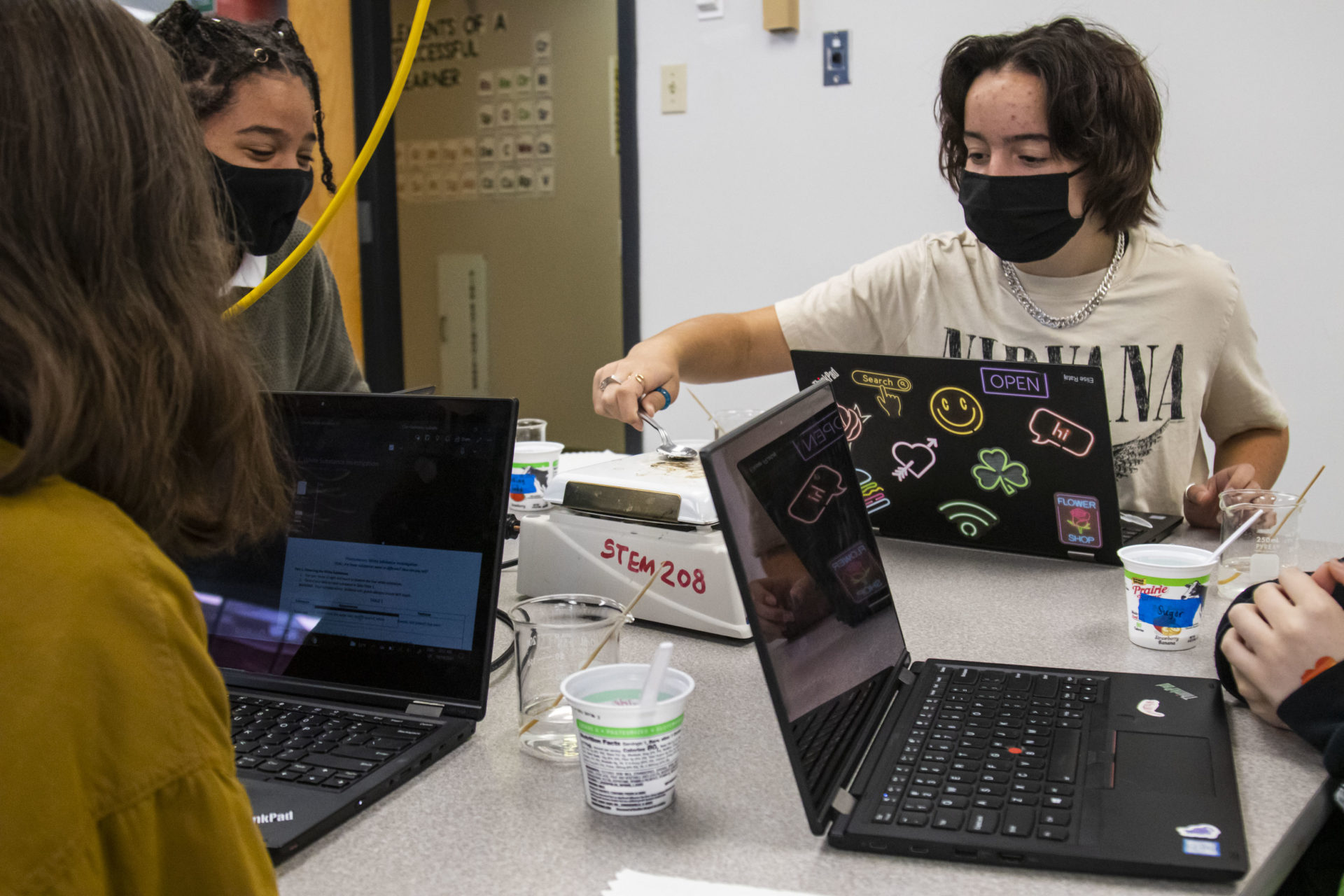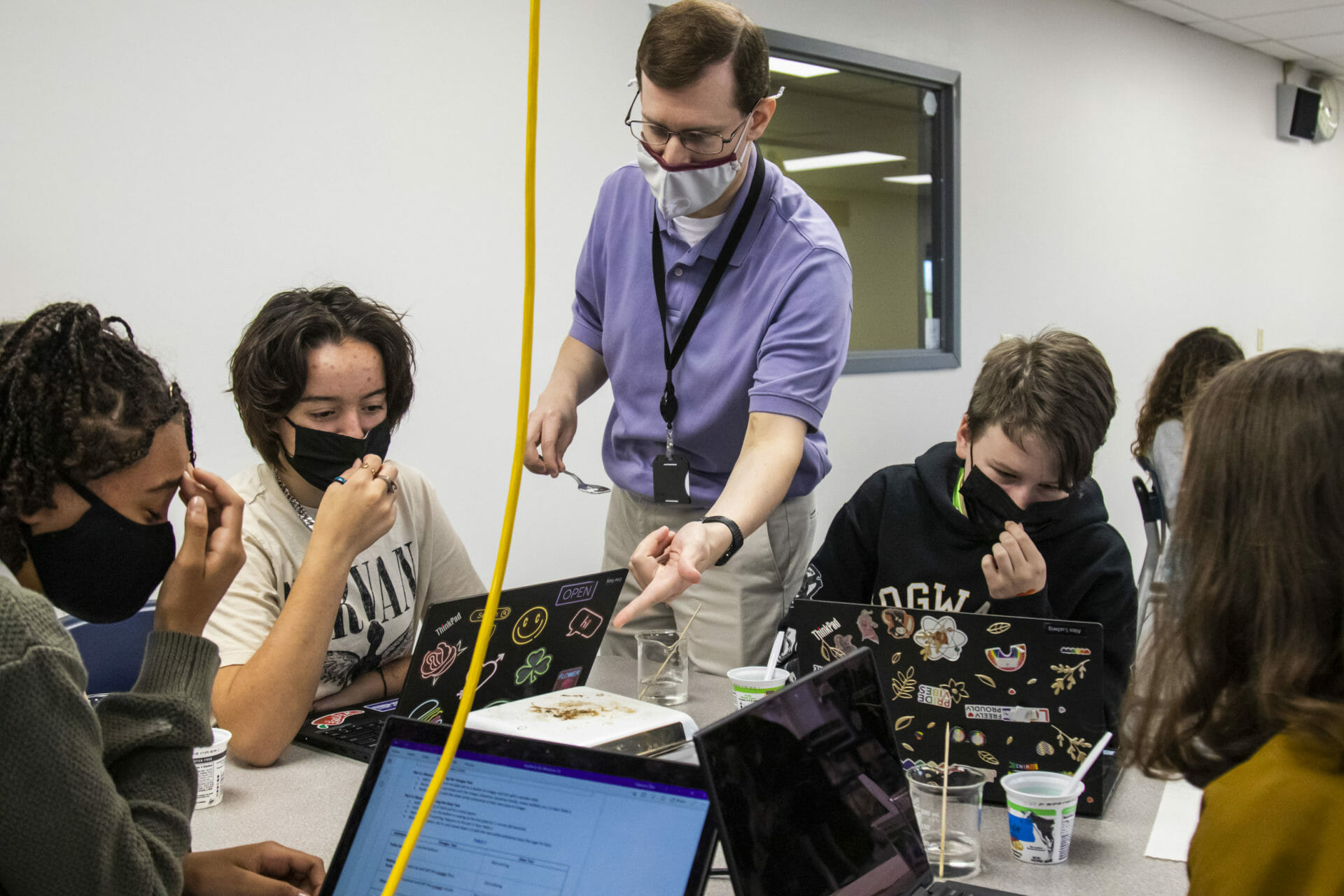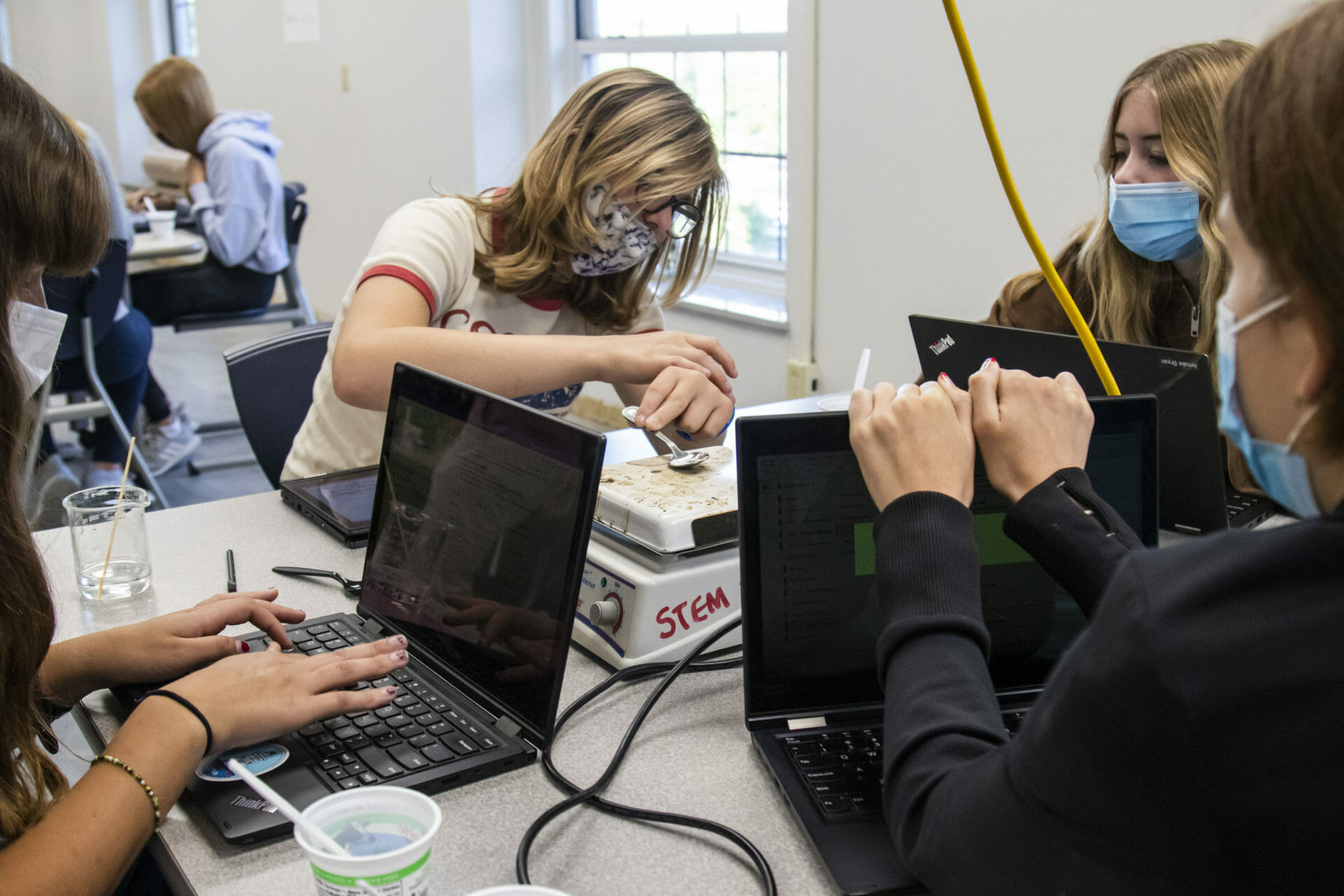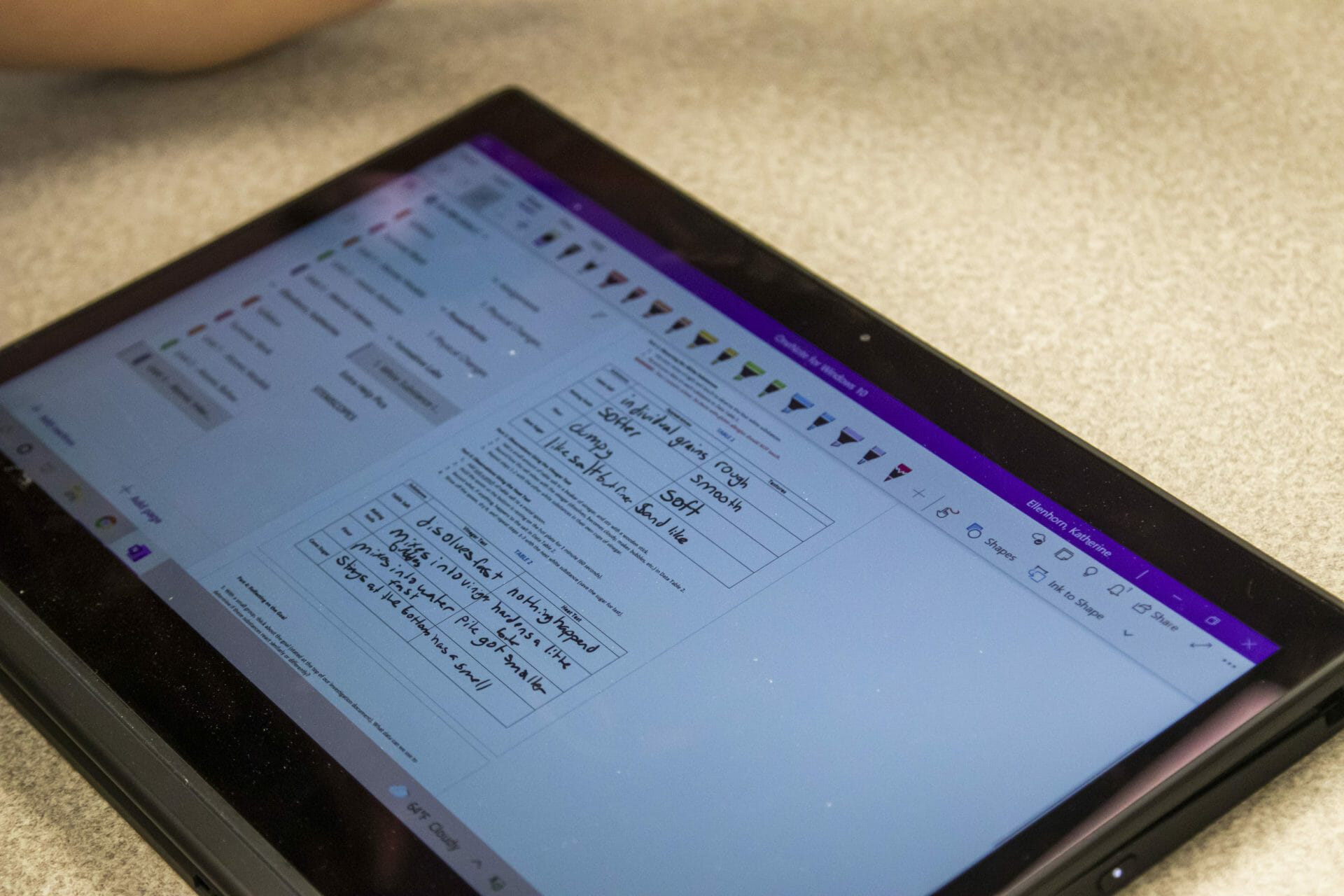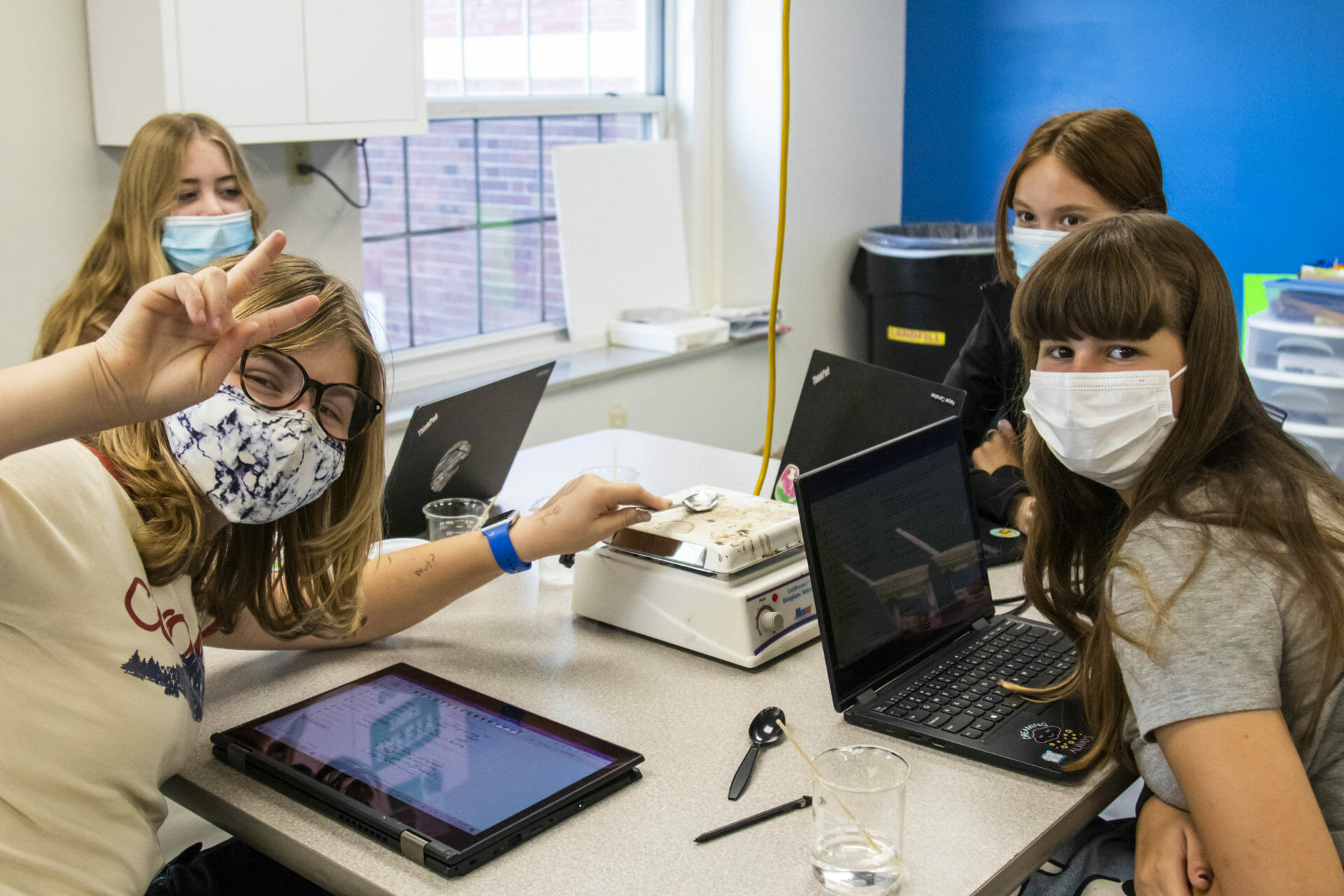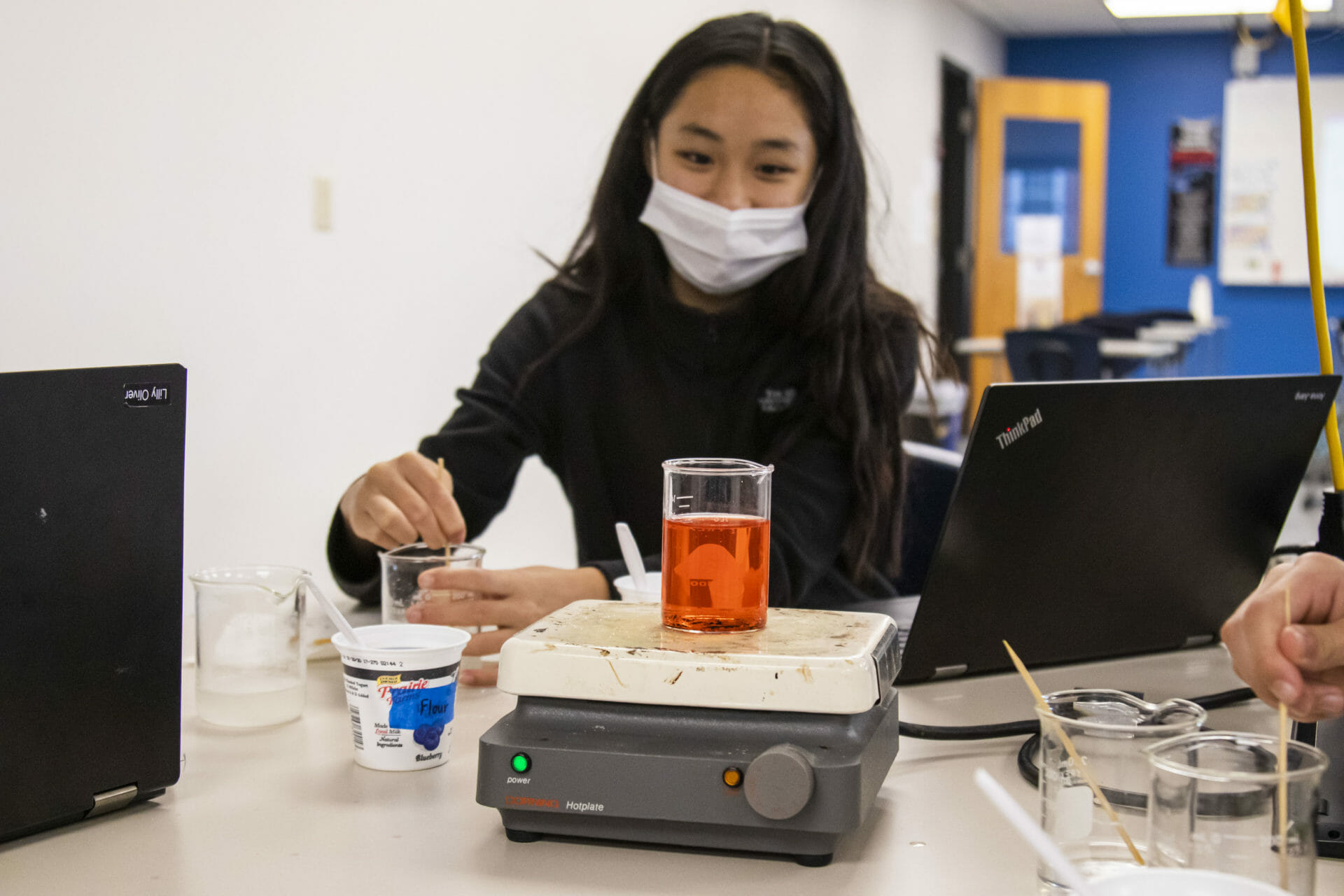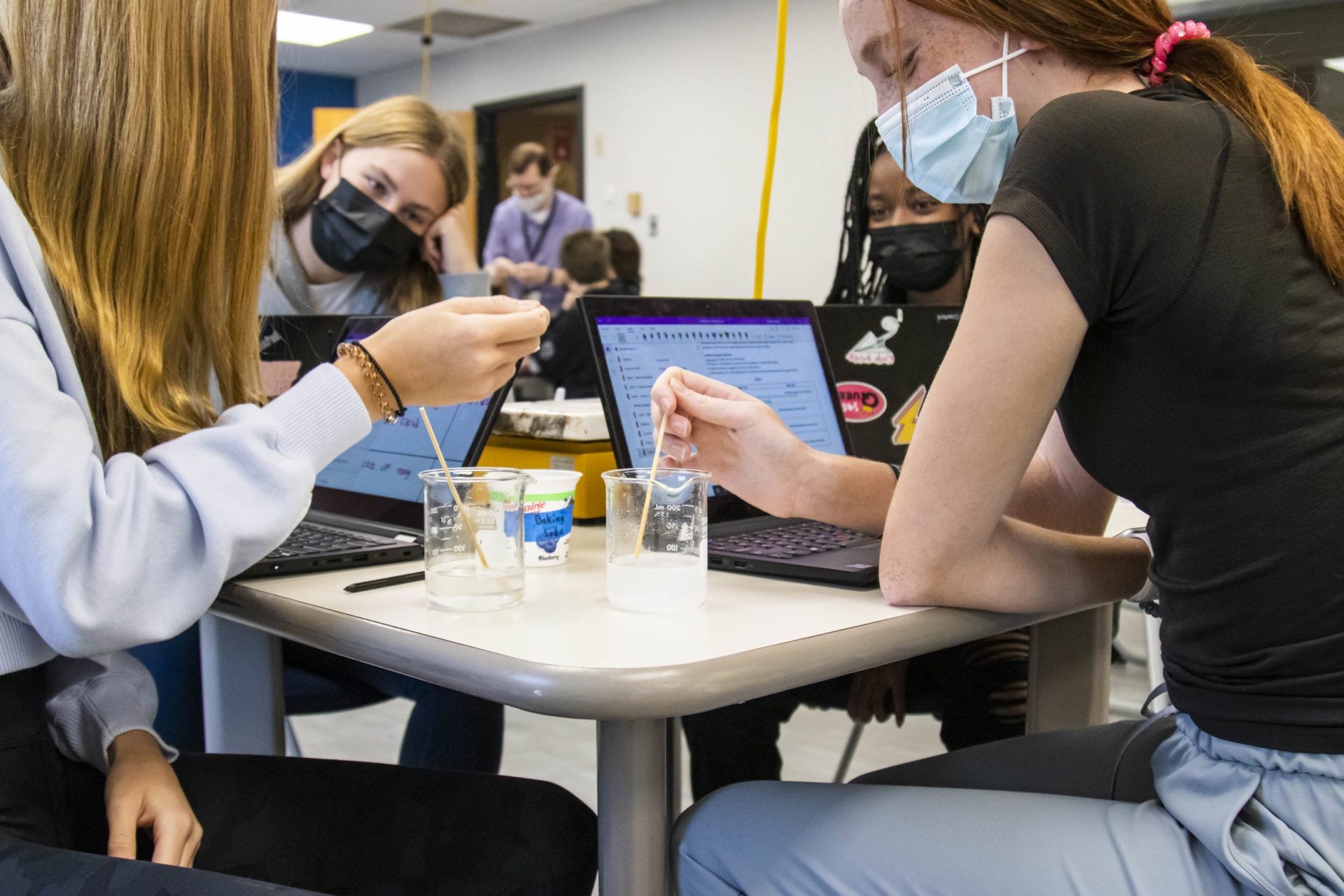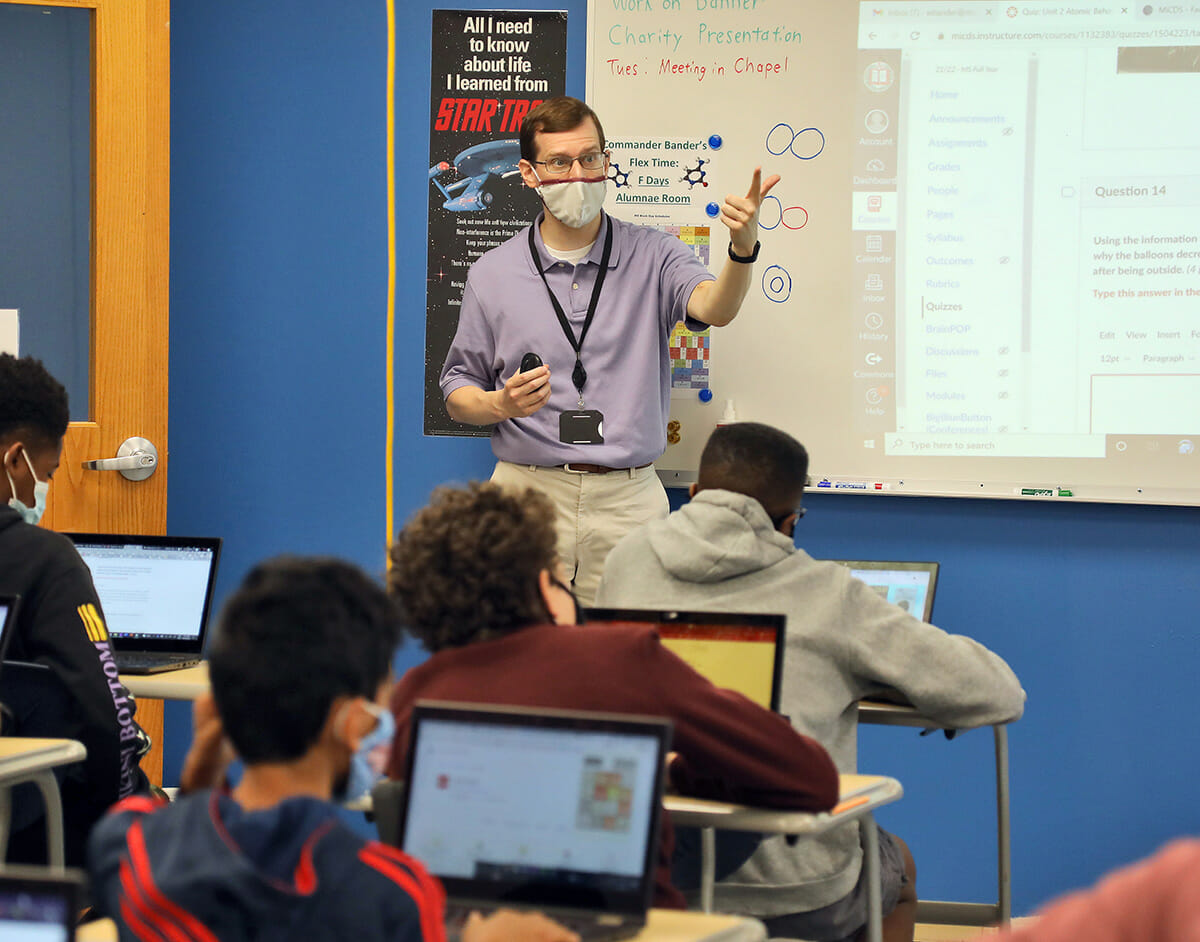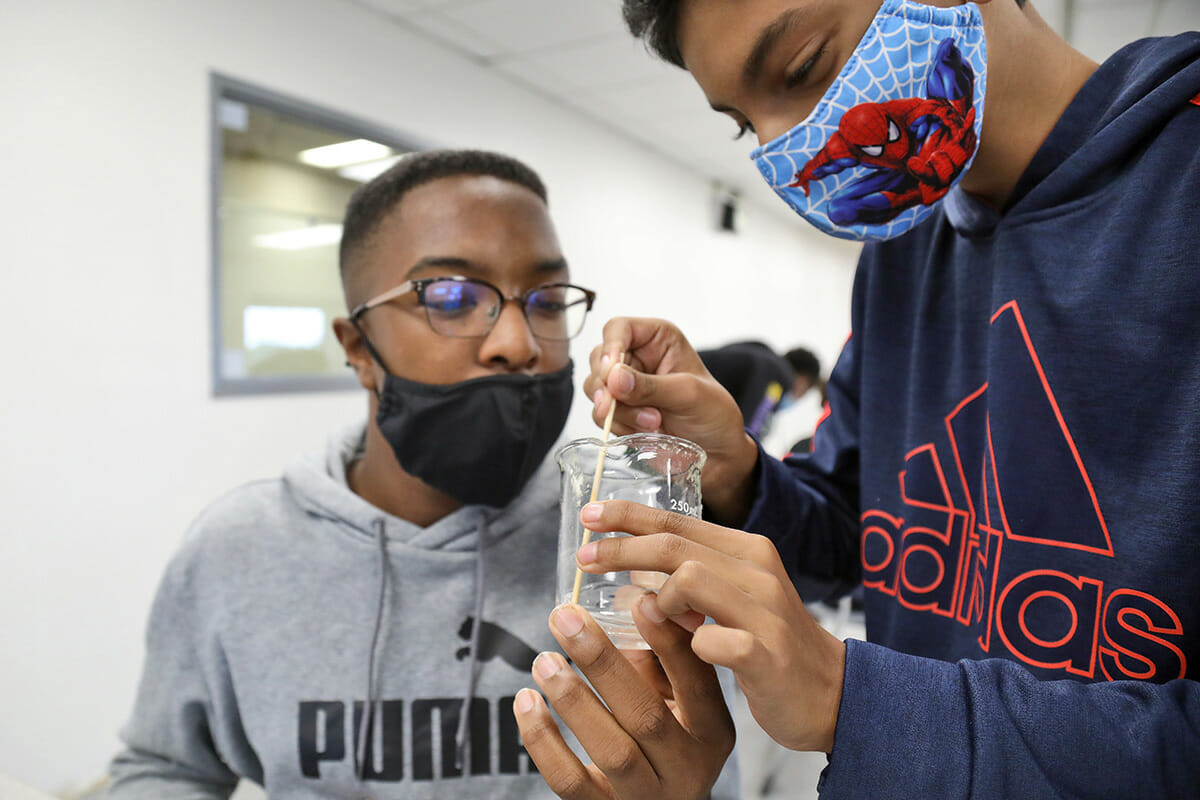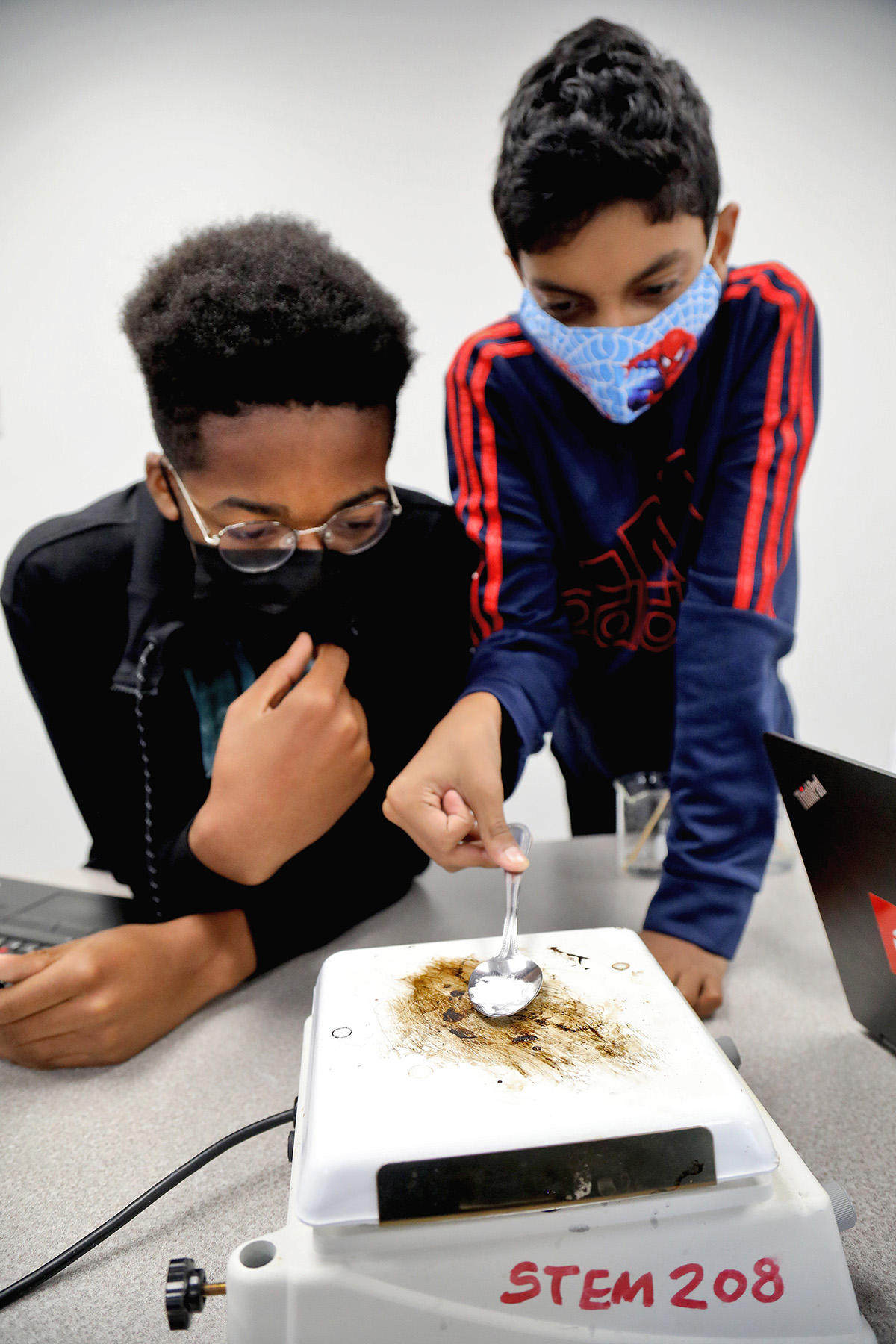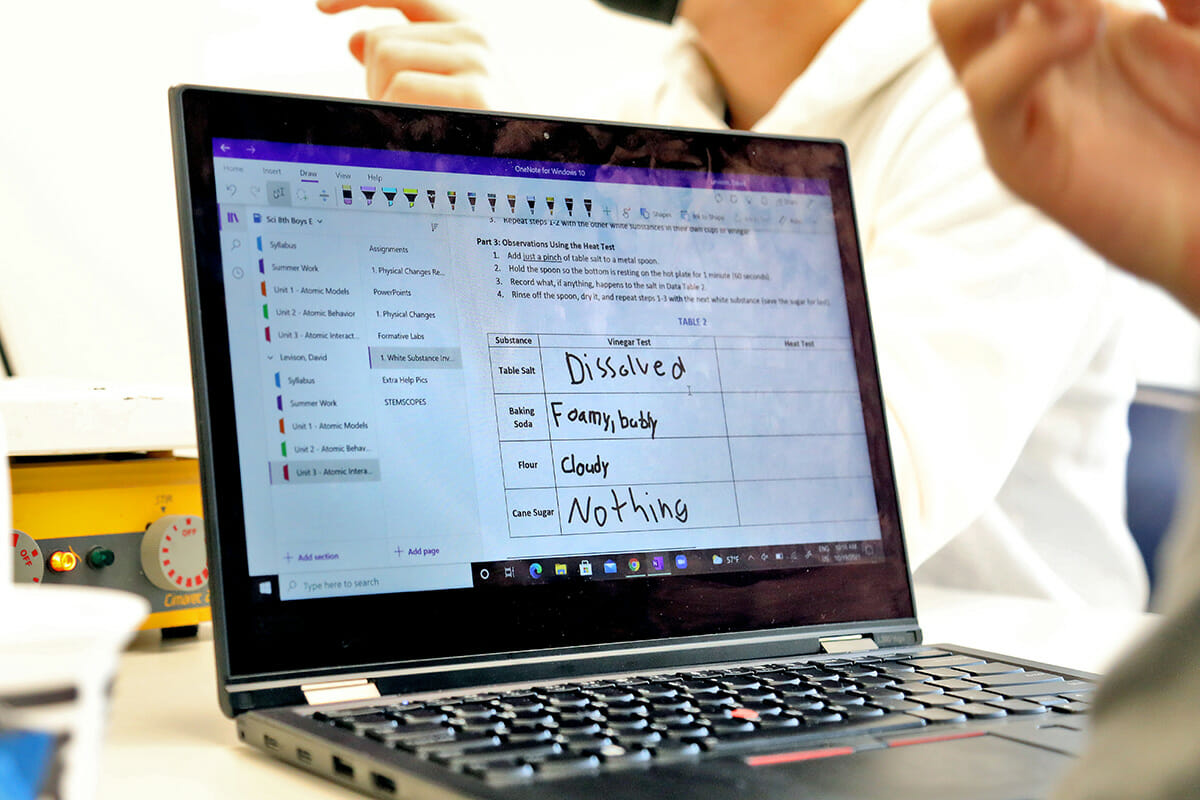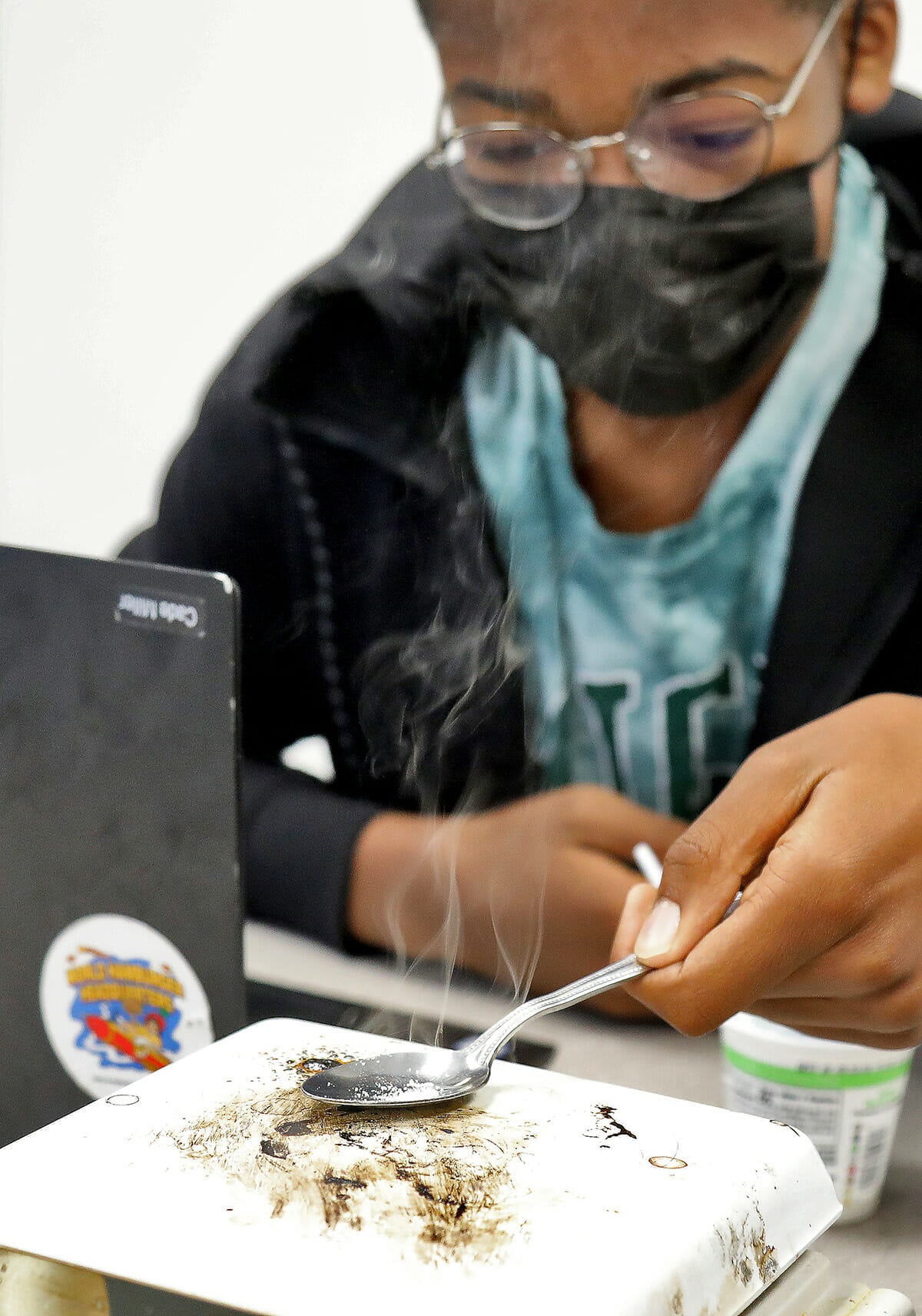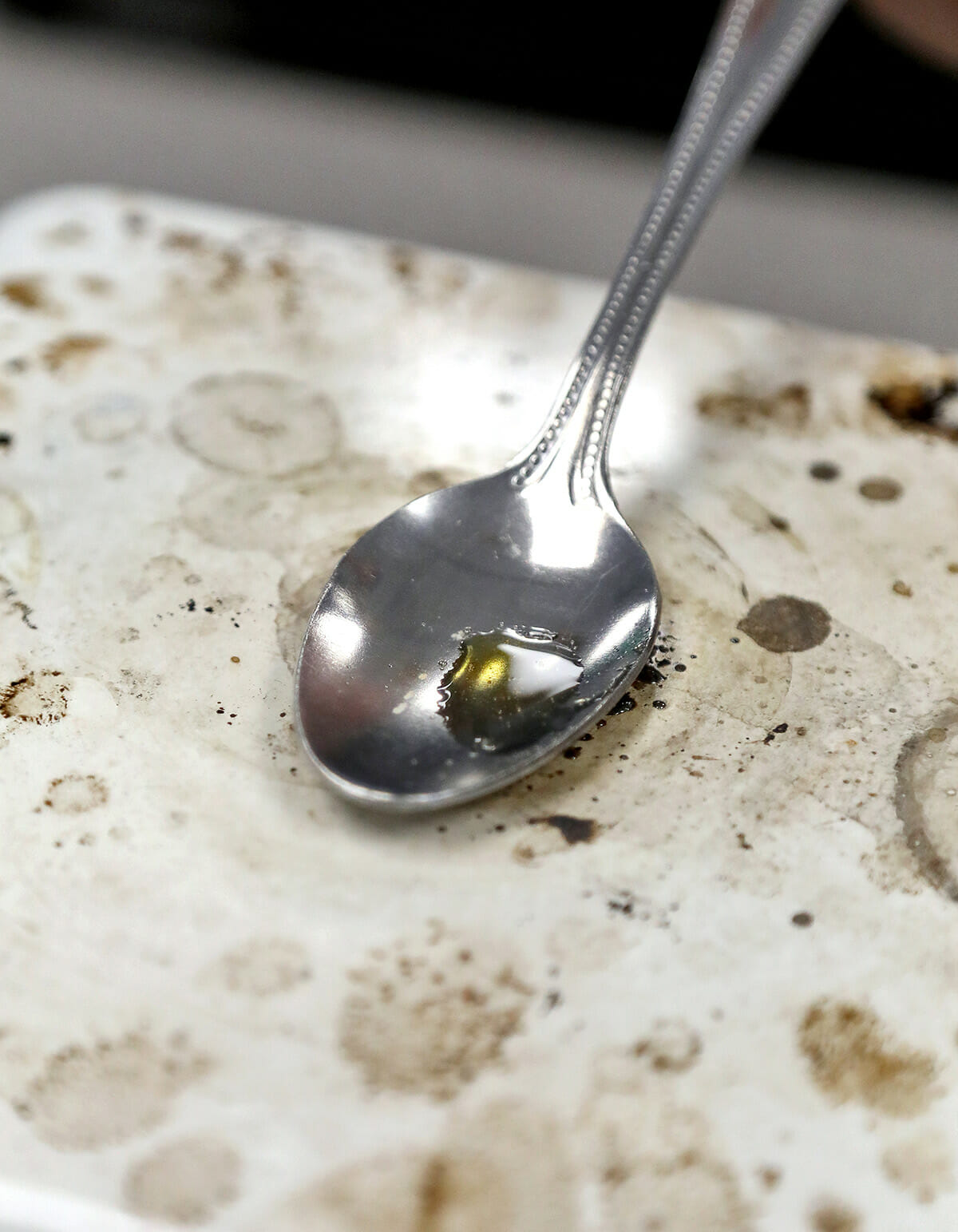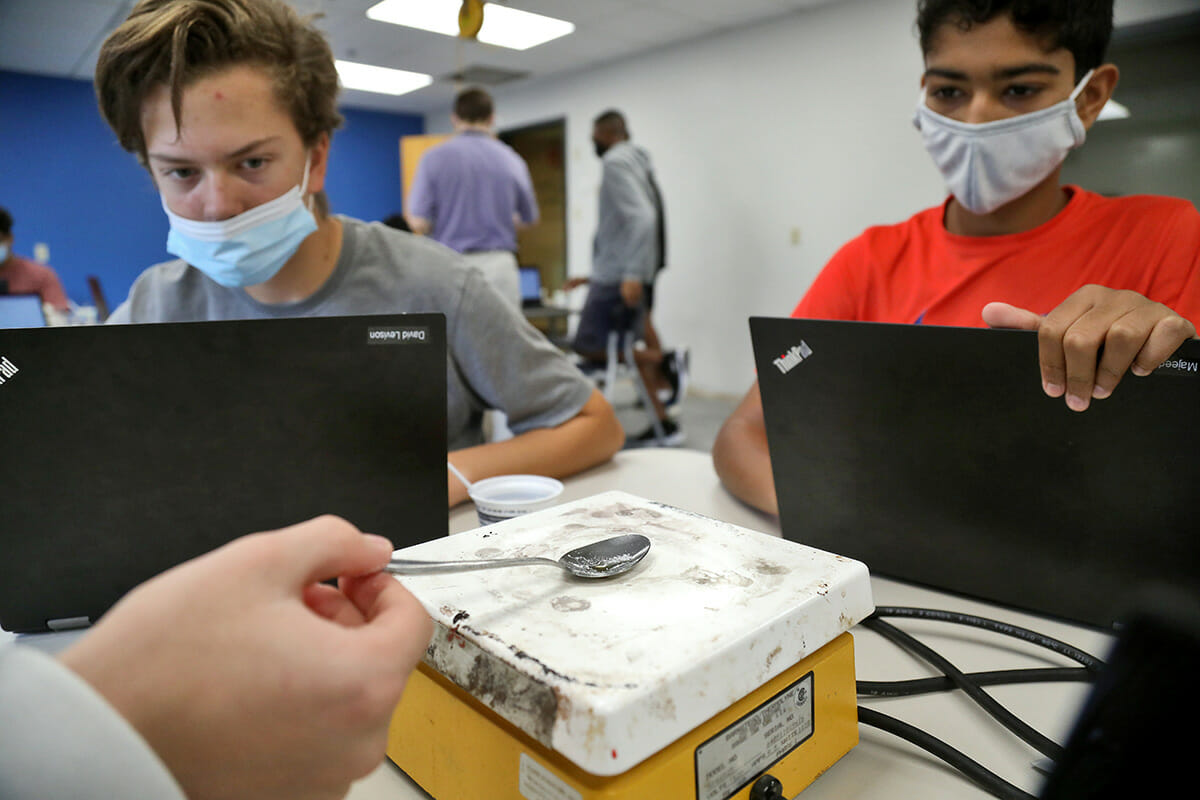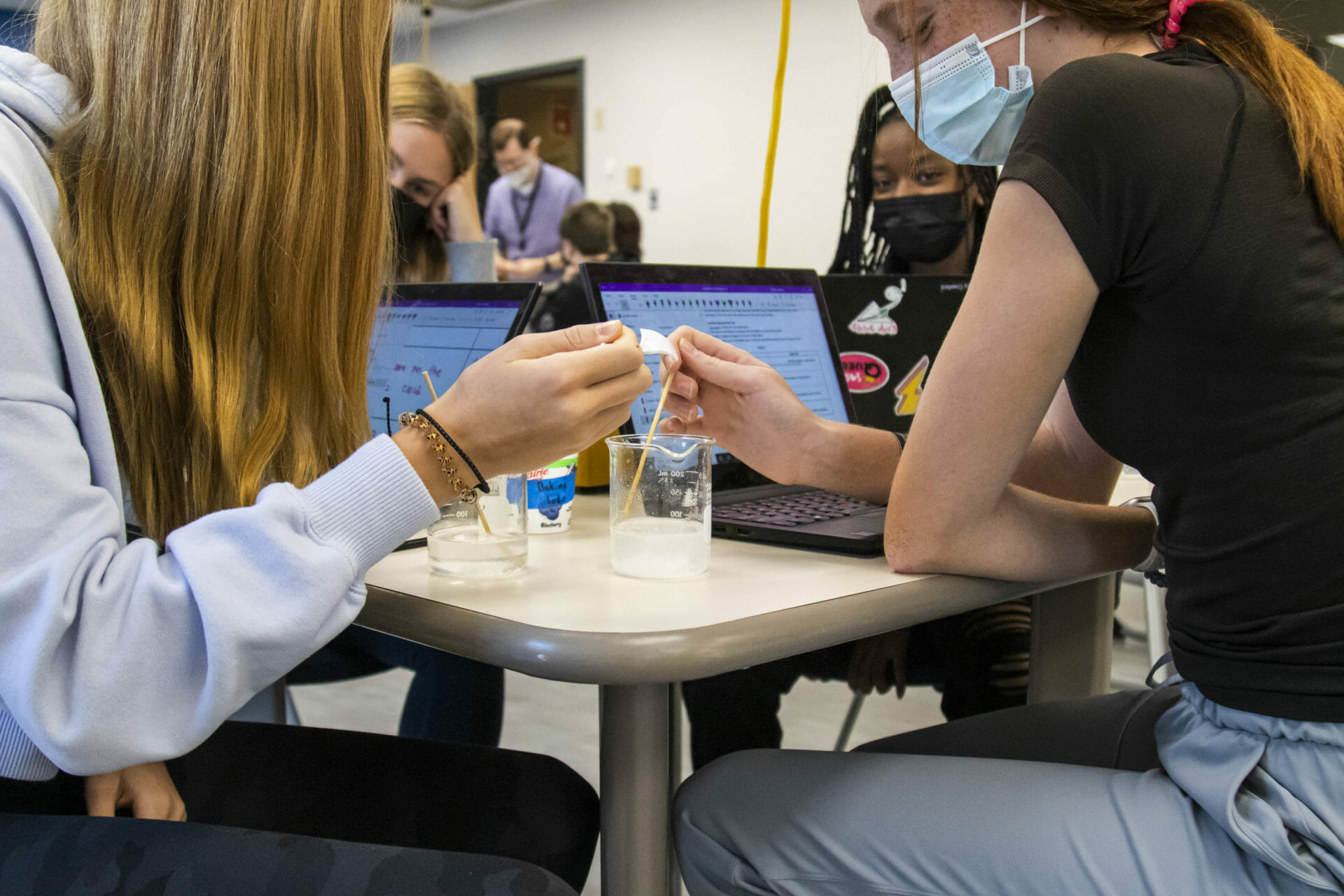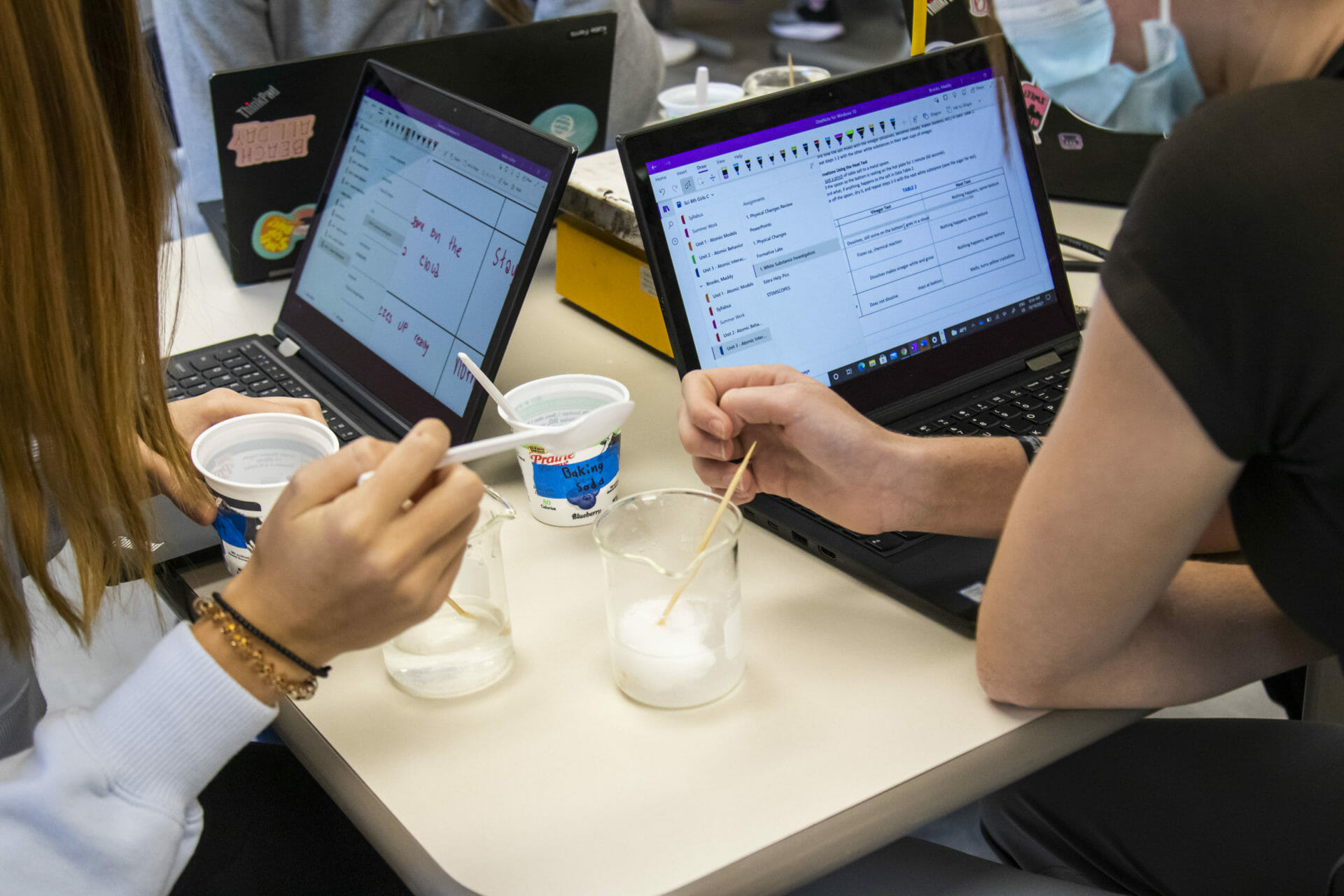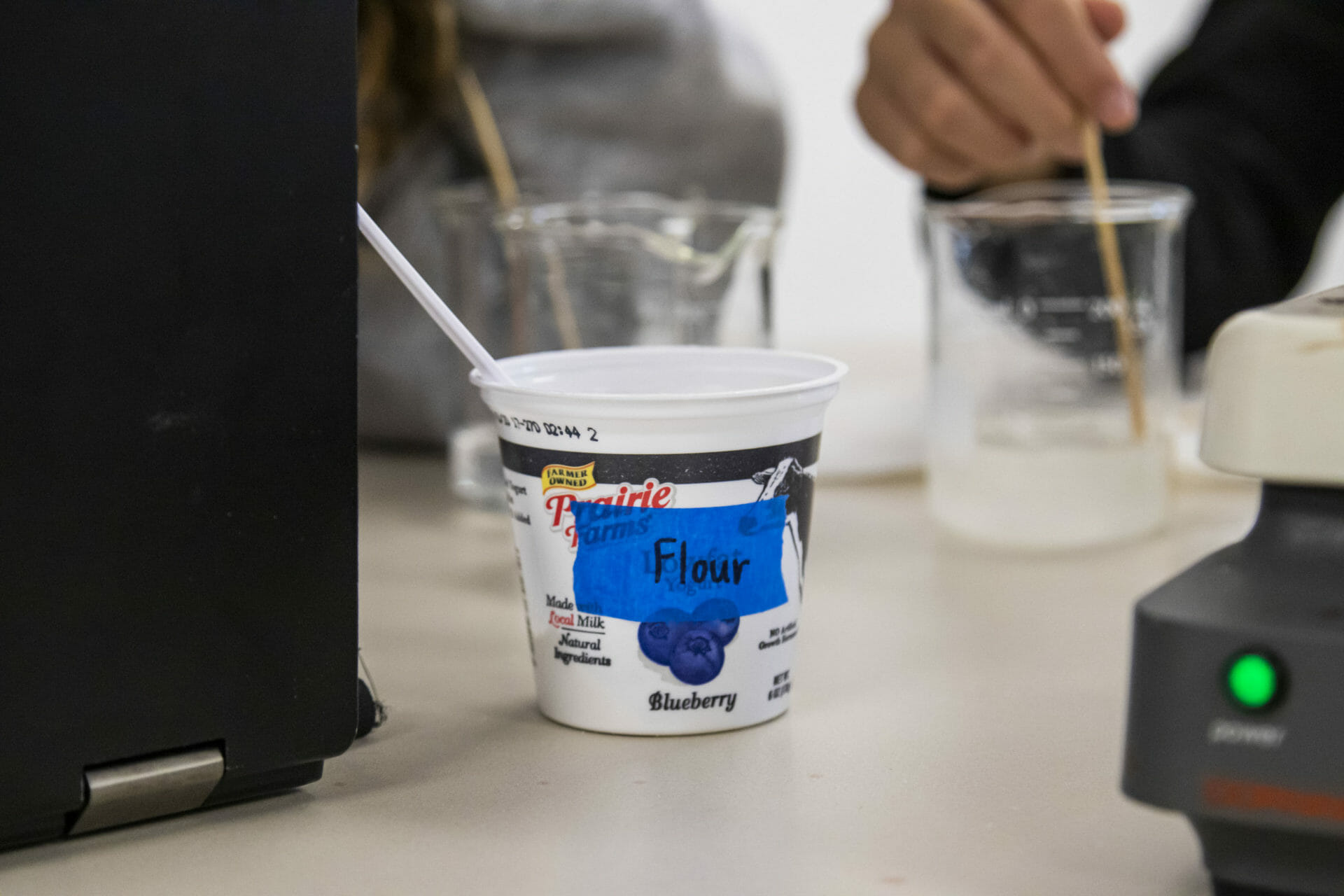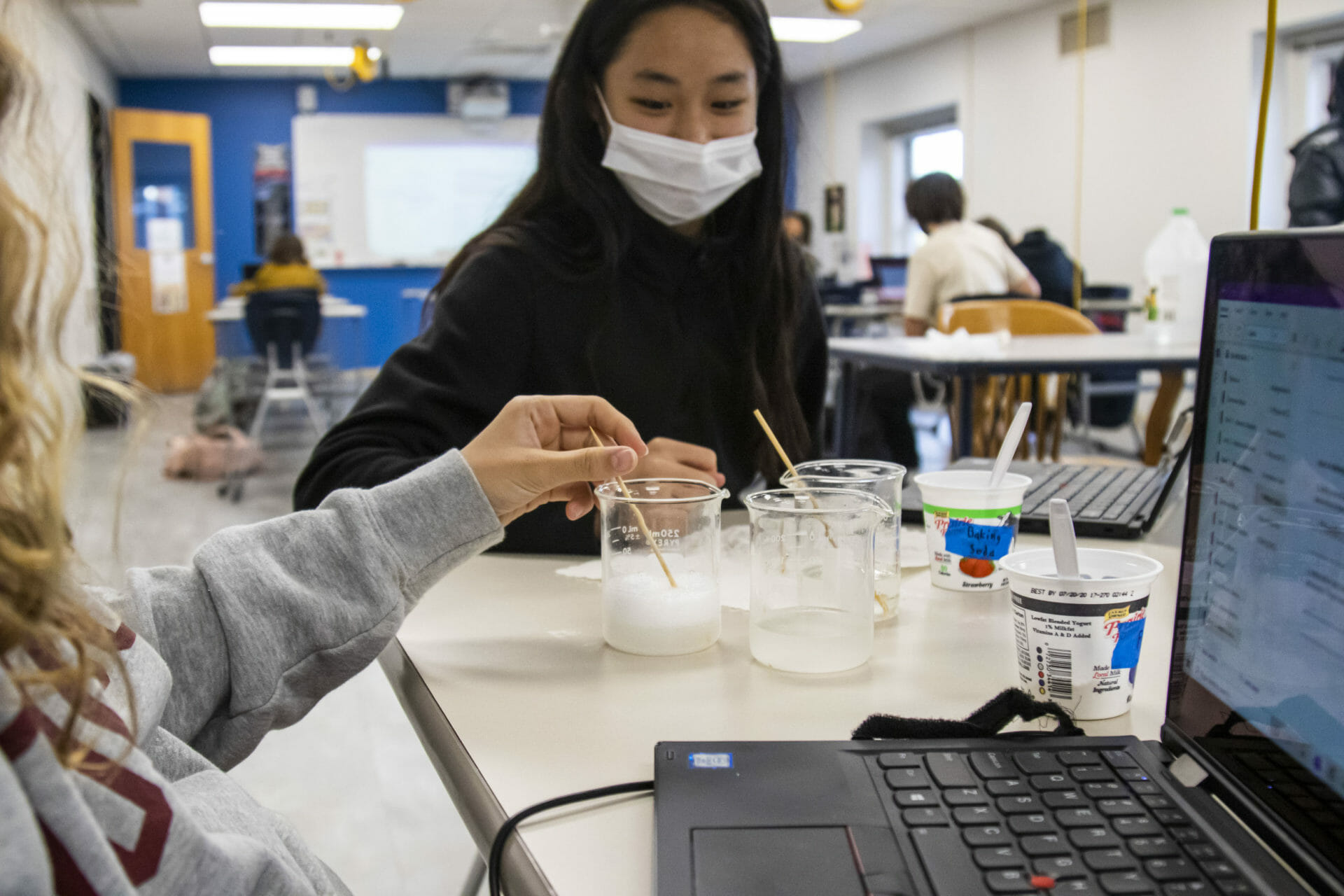Bakers know there’s a world of difference between table salt, baking soda, flour, and cane sugar, even if they all look similar. Eighth grade chemists were challenged to go beyond the recipe card and investigate the differences down deep, particularly how they react to different substances.
First, they used their senses of sight and touch to observe the four white substances, carefully recording their data in a table. Next, they used beakers to mix small amounts of each substance with vinegar, recording whether the substance dissolved, became cloudy, made bubbles, or something else. Finally, they placed a pinch of each substance on its own metal spoon before resting the spoon on a hot plate. This allowed the students to observe chemical reactions due to heat. Their teachers recommended they save the sugar for last.
After conducting the experiment and noting their observations, the students reflected about their goal of being able to tell whether the substances were the same or different, and what data could they use to determine if the substances react similarly or differently. They considered what other tests they could do as chemists to help determine if the substances will react similarly or differently.
“It was really fun,” said Alex Ludwig ’26. “I enjoyed working with my group and it helped me learn how different substances react different ways to different situations.”
The students went on to study reactions. Yusuf Zayad ’26 explained, “We also studied physical changes which included phase/state changes, and endothermic and exothermic processes. We learned many phase/state changes like condensation, deposition, sublimation, vaporization, etc.”
Rio Sato ’26 said, “The science lab was very fun and interesting. I enjoyed seeing how even though all of the substances look similar, they all react differently when we put vinegar and added heat to the substances.”
What an interesting investigation by our 8th grade chemists! Maybe next time they’ll add some chocolate chips.
